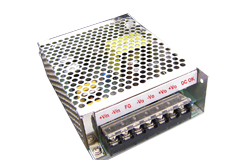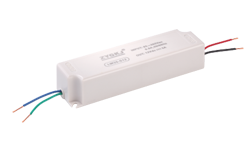նորություններ
Designing an Efficient Industrial AC-DC Converter
Հեղինակ՝ ZYG Power Module Time: 2023-5-9
In modern industrial applications, AC-DC converters play a significant role in transforming electrical power between different voltage levels and frequencies. These converters are essential for powering a wide range of devices, from small electronic circuits to heavy machinery. With the increasing demand for more efficient and reliable power supplies, it is essential to design AC-DC converters that can meet the requirements of industrial applications.
The efficiency of an AC-DC converter is a critical factor that determines its performance. Higher efficiency means that less power is dissipated as heat, resulting in lower operating temperatures and longer device lifetimes. To achieve high efficiency, designers must consider several factors, including power factor correction, switching frequency, and topology.
Power factor correction (PFC) is a technique used to improve the efficiency of AC-DC converters. It involves controlling the input current to the converter to match the voltage waveform, reducing the harmonic distortion and improving the power factor. PFC can significantly improve the efficiency of AC-DC converters, reducing power losses and increasing the power factor.
Choosing the right switching frequency is also critical to achieving high efficiency. A higher switching frequency allows for smaller and lighter components, reducing the overall size and weight of the converter. However, a higher switching frequency also increases switching losses, reducing efficiency. Designers must find the optimal switching frequency that balances size and efficiency.

Topology is another factor that affects the efficiency of AC-DC converters. There are several topologies available, including flyback, forward, and push-pull. Each topology has its advantages and disadvantages, and designers must choose the best topology based on the application’s requirements. For example, the flyback topology is commonly used in low-power applications, while the forward topology is suitable for high-power applications.
In addition to these factors, designers must also consider other design aspects, such as component selection, control circuitry, and thermal management. Choosing the right components, such as high-quality capacitors and inductors, can significantly improve the converter’s efficiency. Control circuitry, such as pulse-width modulation (PWM) circuits, can help regulate the output voltage and improve efficiency. Thermal management is also essential, as it can help dissipate heat and prevent overheating.
In conclusion, designing an efficient industrial AC-DC converter requires careful consideration of several factors, including power factor correction, switching frequency, and topology. By optimizing these factors and considering other design aspects, designers can create high-performance and reliable AC-DC converters that meet the demands of modern industrial applications.
Նախորդը: Designing an AC-DC Converter Circuit: A Step-by-Step Guide
Հաջորդ: AC-DC Converter Module: Efficient and Reliable Power Conversion Solution
համապատասխան տեղեկատվություն
-
2023-4-12
How to Build an AC-DC Converter
An AC-DC converter, also known as a rectifier, is an electrical device that converts alternating current (AC) power to direct current (DC) power. This conversion process is essential for many electronic devices, as they require DC power to function properly. In this article, we will discuss the basic principles of building an AC-DC converter. The first step in building an AC-DC converter is to choose the right components. The most important components of an AC-DC converter are a transformer, a diode bridge, and a filter capacitor. The transformer is used to step down the AC voltage to a lower voltage that can be rectified. The diode bridge is used to rectify the AC voltage, which means that it converts the...
Մանրամասնորեն -
2023-5-27
Unleashing the Power of LED: Exploring the LED Power Series
LEDs, or light-emitting diodes, have revolutionized the lighting industry in recent years. They are efficient, durable, and versatile, making them ideal for a wide range of applications, from household lighting to large-scale industrial projects. However, not all LEDs are created equal. Some are more powerful than others, and one series that stands out in particular is the LED Power Series. The LED Power Series is a line of high-intensity LEDs designed for demanding applications that require bright, reliable lighting. These LEDs are available in a range of sizes and colors, and they can be used in a variety of settings, from automotive lighting to street lighting and beyond. The key to their success is their advanced design and construction, which...
Մանրամասնորեն -
2023-4-23
how to wire ac to dc power supply
When it comes to converting alternating current (AC) to direct current (DC), there are several steps involved in the process. While it may seem complicated, with the right tools and some basic knowledge of electrical wiring, it is actually quite simple. In this article, we will provide a step-by-step guide on how to wire AC to DC power supply. Step 1: Choose the right power supply Before you begin the wiring process, it is important to choose the right power supply for your needs. You will need to consider factors such as the input voltage (AC), output voltage (DC), and current rating. Make sure that the power supply you select matches the requirements of the device or circuit you will...
Մանրամասնորեն -
2023-5-4
Design and Development of an Industrial AC-DC Converter
Introduction Industrial AC-DC converters are essential components in modern power electronics systems. They convert alternating current (AC) power from the grid to direct current (DC) power for use in various industrial applications. The design and development of an efficient industrial AC-DC converter require a thorough understanding of power electronics principles and a careful selection of components to ensure optimal performance. This article discusses the essential steps involved in the design and development of an industrial AC-DC converter. Step 1: Determine the Specifications The first step in the design process is to determine the specifications of the industrial AC-DC converter. The specifications should include the input voltage and frequency, output voltage and current, power rating, and efficiency requirements. These specifications will...
Մանրամասնորեն -
2023-5-25
Efficient 12V 15A AC to DC Converter for Reliable Power Conversion
Introduction Efficient power conversion is essential in modern electronics and electrical systems. When it comes to converting Alternating Current (AC) to Direct Current (DC), a reliable and efficient converter is needed. This article will discuss a 12V 15A AC to DC converter that is designed for efficient and reliable power conversion. What is an AC to DC Converter? An AC to DC converter is an electrical device that converts Alternating Current (AC) to Direct Current (DC). The conversion process involves rectifying the AC signal and filtering it to produce a smooth DC output. AC to DC converters are commonly used in electronic devices, such as power supplies, battery chargers, and motor drives. Features of the Efficient 12V 15A AC to...
Մանրամասնորեն -
2023-8-28
AC/DC Power Supply Module: Efficient and Reliable Solution for Various Applications
Introduction The demand for reliable and efficient power supply solutions has never been higher. Whether it is for industrial automation, telecommunications, or consumer electronics, a stable and efficient AC/DC power supply module is crucial to ensure the uninterrupted operation of these applications. This article aims to explore the benefits and applications of AC/DC power supply modules and highlight their importance in various industries. 1. What is an AC/DC Power Supply Module? An AC/DC power supply module, also known as a power converter, is an electronic device that converts alternating current (AC) into direct current (DC). It acts as a bridge between the power grid and electronic devices, providing a stable and regulated power source. These modules are typically compact and...
Մանրամասնորեն


















